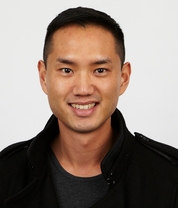
Dr Daniel Suan
Dr Dan Suan grew up in Perth and studied medicine at UWA before moving to Sydney to train as an Immunologist at Westmead Hospital and St Vincent's Hospital. After this, he completed his PhD in 2015 in the lab of Professor Rob Brink at Garvan, using transgenic mouse models to investigate memory B cell and plasma cell differentiation in the germinal centre response, the mechanism by which the human immune system forms antibodies and long-lived memory against infection and vaccination.
Dan was appointed as a Staff Specialist in Clinical Immunology and Immunopathology at Westmead Hospital in 2015, where he cares for patients with a wide range of immune conditions, including autoimmune diseases, allergies, immunodeficiencies and HIV infection. Dan has a longstanding interest and commitment to teaching and training, and is a Conjoint Senior Lecturer at both the University of Sydney and UNSW. He remained part-time at Garvan to continue his research training and establish a genomics program to study the cause of human autoimmune disorders under the supervision of Professor Chris Goodnow.
The ambitious Hope Research program is studying over 40 autoimmune diseases, including CREST syndrome, psoriatic arthritis, lupus, Sjogren's syndrome, multiple sclerosis and inclusion body myositis, utilising the latest single-cell sequencing technologies. Dan’s research has been supported by funding from the NHMRC, UNSW Triple I, Multiple Sclerosis Research Australia and by generous philanthropic donations and support from community bodies.
Selected publications
See all publications- 2025Clinical and Experimental Immunology10.1093/cei/uxaf005
Functional validation of a novel STAT3 'variant of unknown significance' identifies a new case of STAT3 GOF syndrome and reveals broad immune cell defects.
- 2024The Journal of Allergy and Clinical Immunology10.1016/j.jaci.2024.11.031
Inborn errors of immunity reveal molecular requirements for generation and maintenance of human CD4 IL-9-expressing cells.
- 2024Immunity10.1016/j.immuni.2024.10.014
Impaired development of memory B cells and antibody responses in humans and mice deficient in PD-1 signaling.
- 2023Nature10.1038/s41586-023-06717-x
Autoantibodies against type I IFNs in humans with alternative NF-κB pathway deficiency.
- 2022Immunity10.1016/j.immuni.2022.11.001
STAT3 gain-of-function mutations connect leukemia with autoimmune disease by pathological NKG2D CD8 T cell dysregulation and accumulation.
